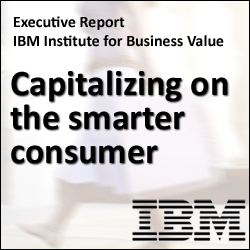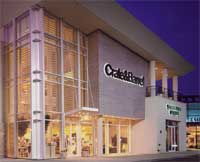 |
October 11, 2013 - Supply Chain Flagship Newsletter |
 |
| |
 |
New Executive Report Available from IBM |
 |
|
|||||||||||||||||||||||||||||||||||||||||||||||||||||||||||||||||||||||||||||||
My Top First Thoughts Columns of All-Time
|
||||||||||||||||||||||||||||||||||||||||||||||||||||||||||||||||||||||||||||||||
| GILMORE SAYS: |
"By definition, half of all companies are below the median in any performance area, yet surveys and anecdotal evidence show most companies usually rate themselves above average. Many of them are obviously wrong." WHAT DO YOU SAY? |
I have rarely but occasionally turned the First Thoughts platform over to a guest columnist - less than 10 times so far, I believe - though I will note they have almost all been very good. So that means about 4790 columns penned by me over 10 years.
Do I have a plan for the schedule? Yes and no. Fortunately, I have a number of now annual columns (CSCMP conference review, end of year summaries, State of Logistics report, etc.) that soak up some of those columns each year. Sometimes, there are outside events (e.g., the surprise merger of JDA Software and RedPrairie last year) that are important enough to spawn a spur of the moment column.
Outside that, are there times when I am in a panic about what to write in a given week? Not frequently, but occasionally. I have almost always been able in those cases to throw something pretty decent together.
With very few exceptions, I have rarely directly repeated a topic, though inevitably at some point there will have to be some of that.
So with that, in basically random order, here are my top 10 favorite columns, after reviewing the SCDigest archive (100% available for all 10 years).
The Probability of Supply Chain ROI: This summarized the thinking of statistician (not exactly the right word) Doug Hubbard, who persuasively argues that the normal method of estimating the ROI for a project or investment is fundamentally flawed. ROI isn't a single number estimate, Hubbard says (and clearly correctly so, from my view), but rather a probability curve. Is the probability high that the investment return will exceed the company's hurdle rate? That and related approaches are the right way to think about the issue.
Dr. Eli Goldratt Unplugged: Simply ask, and sometimes the door will open. In 2006 I sent an email to someone connected with the legendary Goldratt, author of the seminal book "The Goal" that introduced the concept of the Theory of Constraints. That led to a long phone discussion with Goldratt, where we covered a wide range of topics. Whether it is a company's sales volumes or a supply chain issue, Goldratt argued persuasively that there is always - repeat always - a single constraint that stands in the way of progress. Solve that, you make gains, but then run into the next constraint.
Recognize that, and you will find the inherent simplicity in what appears to be complex problems, Goldratt said. And companies would do a lot better if they really focused on "win-win" with regards to change management - but they rarely do. It's almost often win-lose.
The Top 10 Supply Chain Innovations of All-Time: I am very proud of this for two reasons. (1) I think it is very interesting (the top 10 ranges from the Ford assembly line to Procter & Gamble's Continuous Replenishment Program, with the number 1 innovation being the Toyota Production System (Lean)); (2) Because we captured some supply chain history that I believe would have otherwise been lost. Chief example: the story of 3M building the first US transportation load control center, under the leadership of Roy Mayeske. We managed to capture that story, which otherwise would have been gone forever.
The 50% Problem: This has been a theme I have written about a few times, but always with fresh evidence. The summary: by definition, half of all companies are below the median in any performance area, yet surveys and anecdotal evidence show most companies usually rate themselves above average. Many of them are obviously wrong.
Supply Chain, AIG, and What's Next: Written somewhat emotionally but yet logically after the Wall Street collapse in September, 2008 (interestingly, which occurred during the CSCMP conference in Denver that year). I summed up a number of ramifications from these events, including predictions for a "new normal" that would last for years and which turned out to be very prescient. But what put it on my list was a feedback email from then highly-respected AMR analyst John Fontanella (since deceased), who wrote that we had "taken the rest of the industry to school" in that First Thoughts column. I was very happy to read that.
P&G's Dick Cantwell Unplugged on RFID: I arranged this long interview with Cantwell not long after he had come to P&G with its acquisition of Gillette. Both there, at P&G, and at the VICS organization, he was among the strongest and most articulate backers of why RFID made sense in the consumer goods to retail supply chain. We went at it pretty good, in what was an interview that gained worldwide exposure. I will say Cantwell may have been right logically. But he didn't well enough foresee the troubles which Walmart would have implementing its program, making me the more correct one in the end. I believe Cantwell is at Cisco now.
Year of Living Distribution Dangerously: This is was a personal story on the 10 year anniversary of the year-plus I spent implementing a new WMS and DC automation system at totes Isotoner in 1998. Partnering with me in that effort was Cliff Holste, SCDigest's current materials handling editor. Let's just say it was a punishing but strangely rewarding year, as others that have been through such a fire but come out with a success in the end have told me. A key challenge: cartons coming from a closed DC in New Jersey having the same case bar codes for packs of 12, 24 and 36 - almost a death knell.
A Little Supply Chain Finance 101: I was unprepared for how popular this column would be, which in great summary described the linkages between the income statement, the balance sheet, and the cash flow statement resulting from supply chain improvements. "Give us more" was the strong feedback.
Metrics Strategies and Supply Chain Performance: Got a bit of disagreement from some readers on this one, which argued that given the detailed metric systems which many companies have implemented and the quick reaction to poor performance in these measures, the difference between leaders and laggards has to be one of largely setting the right or wrong internal supply chain goals. Despite the pushback from some, I wouldn't change a word.
Bees, Order Picking and Self-Organizing Logistics Systems: I will end with this one, because it is a fun piece, and the kind of thing we do here at SCDigest that others don't. Summary of Georgia Tech's John Bartholdi's ideas on how order picking lines, some manufacturing processes and other supply chain sub-systems can see significant productivity gains from "self-organizing" systems in which the work goes naturally to those in the work queue who have the best opportunity to get the job done. It works in split case picking in spades, but is most obviously spotted today in the way your local Subway or Chipotle gets sandwiches or burritos built.
It was fun for me to take a look at these past top columns. I hope you feel the same.
Do you like Gilmore's list of his top columns? Any others that you especially remember? Let us know your thoughts at the Feedback section below.
| View Web/Printable Version of this Page |
|
|
|
YOUR FEEDBACK
We received almost 100 mostly short and sweet emails after our column two week's ago on SCDigest hitting its 10th anniversary- thank you. A few samples below.
Feedback of the Week - On 10 Years of Supply Chain Digest
Hard to believe that it is 10 years already that I've been reading the Digest. I get lots of supply chain information pushed to me via the Internet every day about supply chain management. Lawrence (Larry) Lapide, Ph.D.
|
||
| More on 10 Years of SCDigest | ||
Congratulations on 10 years Dan. You're a pioneer in this field and have expanded analysis, though leadership and "best in class " solutions that have been embraced and executed by supply chain practitioners like myself to attain new productivity and efficiency highs in their companies. You have also been a sounding board for new ideas, thoughts and practices, sharing this expertise with your growing world wide audience. Tom Dadmun |
||
You and your un-biased and enlightened publication have helped move the practice of Supply Chain Management from the dark corners of the company’s back room to the front office and board room. Careers have been enriched and companies have seen real improvements due to the SC practices that you highlight and even champion. Congratulations on the 10 years and I look forward to reading and learning from you for many years to come.
Geoff Fisher – Customer Supply Chain Director
|
||
Dan, congratulations on 10 years! SCD provides the most relevant supply chain information in the market. I appreciate the range of topics, the practical and honest insight, and the sharing of information you provide in covering current trends and issues.
Best of luck on the next 10. Bob Gosier |
SUPPLY CHAIN TRIVIA ANSWER
Q: In what year was the first real-time WMS installed (meaning used wireless communications in the DC)?
A: We believe in 1975, at a JC Penney DC in Southern California. While there may be other claims. certainly it was right about this time somewhere.
| © SupplyChainDigest™ 2003-2013. All Rights Reserved. SupplyChainDigest PO Box 714 Springboro, Ohio 45066 |
POWERED BY: XDIMENSION
|








